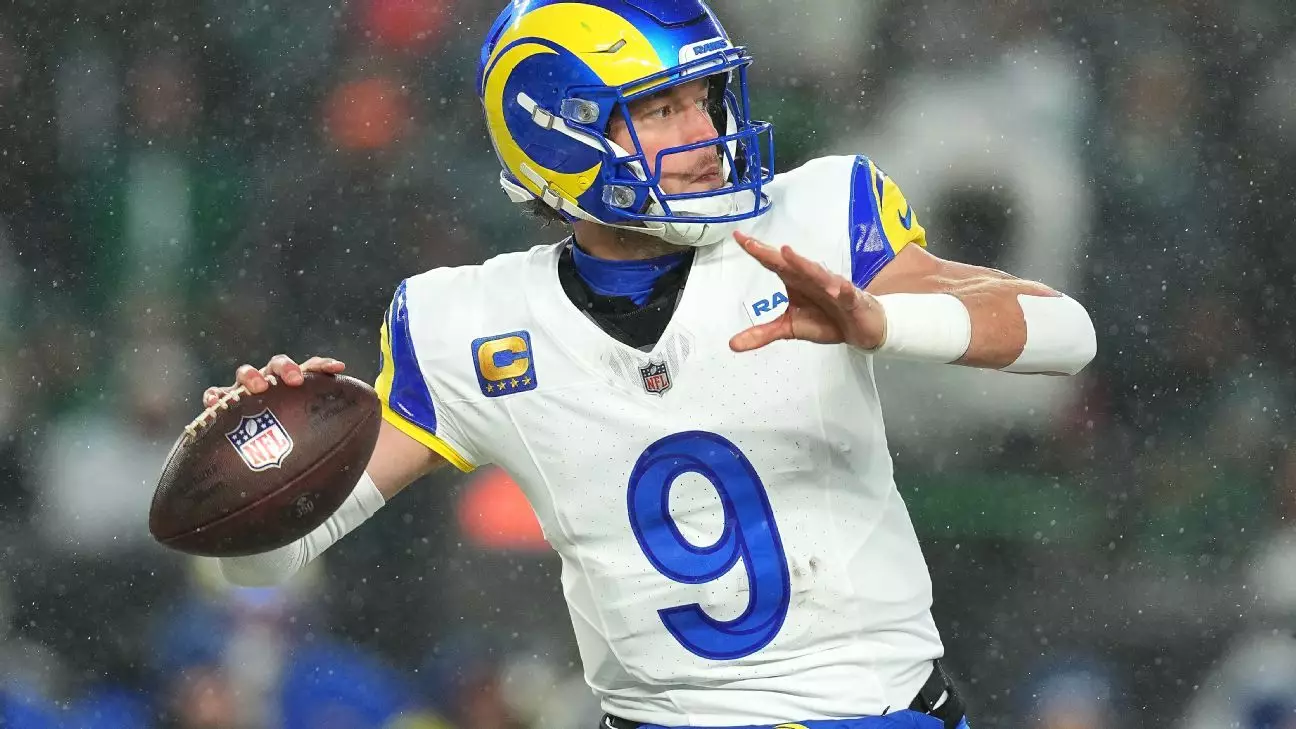In the ever-evolving landscape of the NFL, player contracts often reflect the strategic decisions made by franchises looking to maintain competitiveness and ensure long-term success. The Los Angeles Rams recently restructured quarterback Matthew Stafford’s contract, a move that underscores the complexities of roster management and financial strategy in professional football.
The decision to rework Stafford’s deal highlights the Rams’ commitment to their star quarterback as they navigate a challenging period. Stafford, who joined the Rams in 2021, quickly established himself as a pivotal player, even leading the team to a Super Bowl victory in his inaugural season with the franchise. His ability to perform under pressure has been a hallmark of his career, and Rams head coach Sean McVay has echoed this sentiment, praising Stafford’s contributions during critical playoff games.
This contract adjustment comes on the heels of discussions involving other teams, signaling Stafford’s considerable value in the quarterback market. By giving Stafford’s agent, Jimmy Sexton, permission to explore options, the Rams not only demonstrated transparency in their negotiations but also a proactive strategy to ensure that they maintain a competitive edge.
Under the revised terms, Stafford’s previous extension, signed in March 2022, has been altered to create more favorable conditions for the team while still compensating him appropriately. Stafford had $4 million guaranteed in 2025, but with the new deal, it seems that the Rams are attempting to balance financial constraints with the urgency of fielding a strong team.
McVay has stated that the team’s foremost objective is to keep Stafford as their starting quarterback. However, the nuances of the deal indicate that the Rams are also focused on future roster decisions that could impact the franchise’s trajectory. It’s a delicate act—one that weighs short-term success against long-term sustainability.
As the Rams solidified Stafford’s position, other franchises have begun their search for veteran quarterbacks, particularly the New York Giants and Las Vegas Raiders. The Giants are reportedly assessing various options, including high-profile names like Aaron Rodgers, while the Raiders are looking into alternatives such as Russell Wilson and Justin Fields. This ripple effect is typical of the offseason, where player movements and decisions can dramatically affect the outlook for multiple teams.
The search for quarterbacks is particularly critical this offseason given the fluctuating performance levels of many signal-callers across the league. Teams are eager to find stability to enhance their rosters and improve their chances for a successful run in subsequent seasons.
Looking ahead, Stafford’s legacy is firmly tied to the on-field successes he achieves beyond his contract negotiations. As he moves closer to significant career milestones—specifically, 60,000 passing yards—his performance will be scrutinized through the lens of both personal and team achievements. Only a select few quarterbacks have reached this landmark, and achieving it would cement Stafford’s reputation in NFL history.
Further, with the looming presence of potential competition for quarterback roles across the league, Stafford’s play will need to demonstrate not only resilience but also the ability to inspire confidence in his teammates.
The restructured deal for Matthew Stafford is not just a financial maneuver; it is a strategic commitment to continued excellence in Los Angeles. By retaining one of the league’s top quarterbacks, the Rams are signaling their desire to contend for championships in the coming seasons. As they weave through the complexities of contract negotiations and team dynamics, the overarching goal remains clear: to build a cohesive and competitive roster that can reclaim its position among the NFL elite. With Stafford at the helm, the Rams aim to illuminate the gridiron for many seasons to come.

